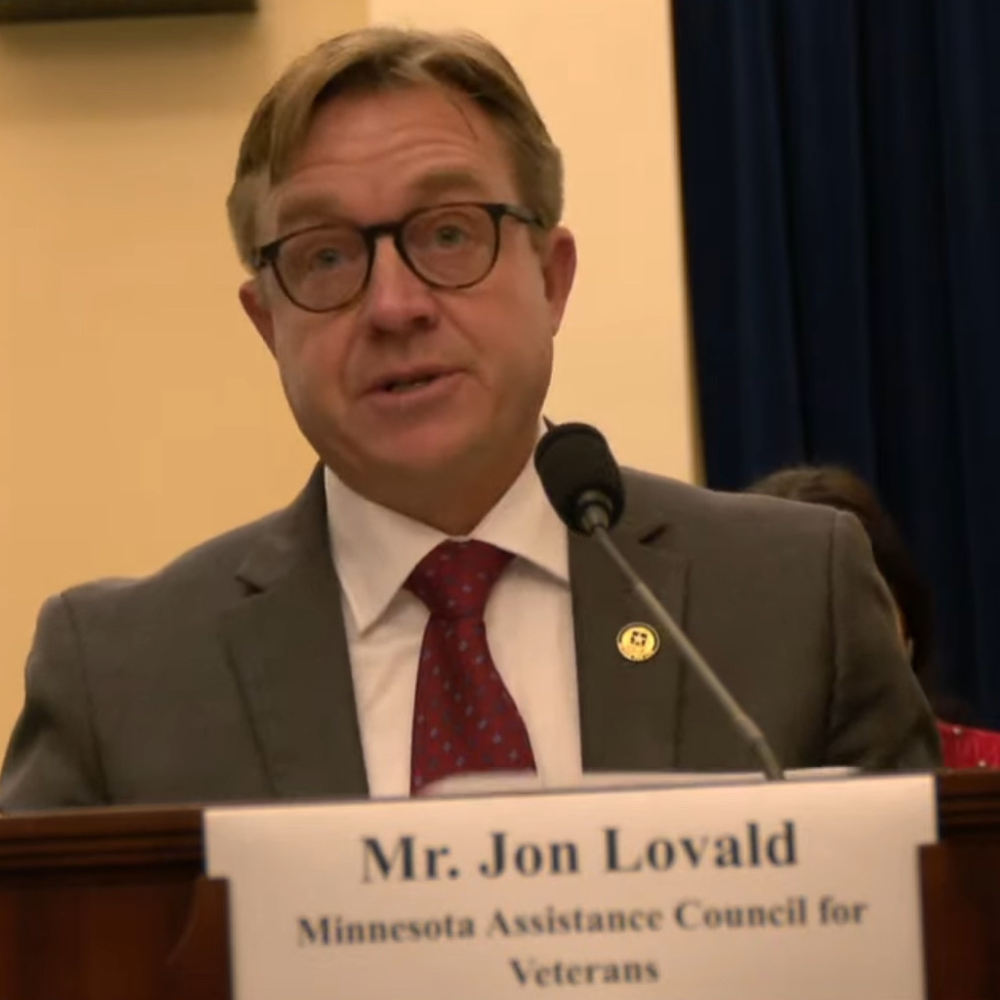Challenges Faced by Homeless Veterans in Rural Minnesota

On January 11th, 2024, MACV COO Jon Lovald addressed the Democrats House Committee on Veterans’ Affairs during a full oversight hearing titled “Rural Access: Is VA Meeting All Veterans Where They Live?”. Click here to watch Jon speak about Veteran homelessness issues impacting Veterans living in rural Minnesota. To learn more about the issues regarding Veterans experiencing homelessness in Minnesota, read below.
Challenges Faced by Rural Veterans in Minnesota
In spite of MACV’s statewide efforts, Veterans in rural parts of Minnesota face significant hurdles. Affordable housing often remains elusive, and many Veterans struggle to find jobs that offer a living wage. Public transportation often doesn’t reach these areas, and Veteran-friendly services are scarce. Even basic necessities like emergency shelters are rare commodities in these remote regions.
Federal Resources and Initiatives
Thankfully, MACV is not alone in this mission. The organization receives significant support from the U.S. Veterans Administration, the U.S. Department of Labor, and the U.S. Department of Housing and Urban Development. The HUD-VASH program, which combines housing vouchers with clinical case management, is a vital resource, although availability in rural areas is still a challenge. The VA healthcare system has also improved its accessibility in rural areas through telehealth services.
State Initiatives and Partnerships
Minnesota’s state government is stepping up with initiatives of their own. The Department of Veterans Affairs provides funding for housing development and a statewide housing subsidy program. Moreover, in the absence of rural emergency shelters, the state offers a reimbursable hotel shelter program. County and Tribal Veteran Service Officers, American Legion, VFW posts, and Disabled American Veterans play crucial roles in bridging the gap between Veterans and resources.
Success Story
Take, for example, the story of Ryan, a 66-year-old Coast Guard Veteran from Winona, Minnesota, with an honorable discharge who served four years on the Coast Guard Cutter Steadfast. Last year his housing stability was challenged after he lost his wife and was struggling to care for himself while grieving. He was hospitalized with a life-threatening infection that needed a partial amputation of his foot. During the months he was in the hospital, he fell several months behind on rent. Additionally, during that time, a family member who was staying in his house was arrested, triggering the landlord to evict Ryan and leaving him homeless after his discharge from the hospital.
Luckily, the small city of Winona has a shelter, and the staff there realized Ryan was a Veteran, so they connected him to MACV services. Due to his medical situation, it was untenable to stay in the shelter. MACV was able to place him into a hotel room using a State-funded emergency hotel program while searching for a sustainable, supportive housing option to fit his needs.
Through our landlord partnerships, we were able to find Ryan accessible housing designated for veterans. Thankfully, this location also has an accessible transportation program since he does not drive. This all sounds like a great assist. However, all these resources required him to move miles away from his hometown. While he is currently housed, he would prefer to live where he still has some family and support system, but there are no options for a Veteran with his limitations in that smaller town.
Conclusion
The issue of Veteran homelessness cannot be solved by one organization or one level of government alone. It takes a partnership between federal resources, state initiatives, and community groups, all working in tandem, to effectively combat the crisis. We thank our federal partners, the VA, HUD, DOL, USICH, and Congress for their continuous support. Reiterating our commitment, we stand steadfast in our mission to end Veteran homelessness in Minnesota and across the United States.